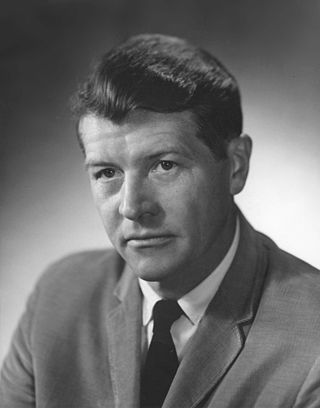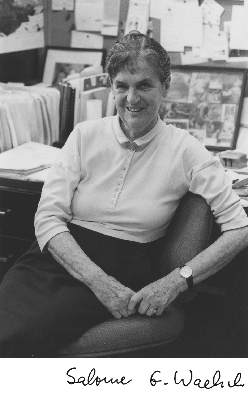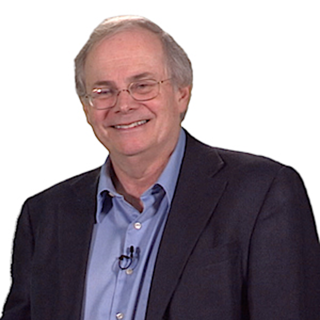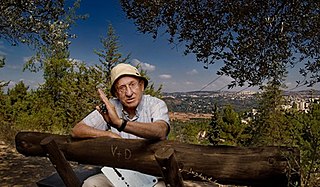Related Research Articles
Stanford University School of Medicine is the medical school of Stanford University and is located in Stanford, California. It traces its roots to the Medical Department of the University of the Pacific, founded in San Francisco in 1858. This medical institution, then called Cooper Medical College, was acquired by Stanford in 1908. The medical school moved to the Stanford campus near Palo Alto, California, in 1959.

Christian Boehmer Anfinsen Jr. was an American biochemist. He shared the 1972 Nobel Prize in Chemistry with Stanford Moore and William Howard Stein for work on ribonuclease, especially concerning the connection between the amino acid sequence and the biologically active conformation.
Albert Lester Lehninger was an American biochemist in the field of bioenergetics. He made fundamental contributions to the current understanding of metabolism at a molecular level. In 1948, he discovered, with Eugene P. Kennedy, that mitochondria are the site of oxidative phosphorylation in eukaryotes, which ushered in the modern study of energy transduction. He is the author of a number of classic texts, including: Biochemistry, The Mitochondrion, Bioenergetics and, most notably, his series Principles of Biochemistry. This last is a widely used text for introductory biochemistry courses at the college and university levels.

Oliver Smithies was a British-American geneticist and physical biochemist. He is known for introducing starch as a medium for gel electrophoresis in 1955, and for the discovery, simultaneously with Mario Capecchi and Martin Evans, of the technique of homologous recombination of transgenic DNA with genomic DNA, a much more reliable method of altering animal genomes than previously used, and the technique behind gene targeting and knockout mice. He received the Nobel Prize in Physiology or Medicine in 2007 for his genetics work.

Salome Gluecksohn-Waelsch was a German-born U.S. geneticist and co-founder of the field of developmental genetics, which investigates the genetic mechanisms of development.
Elliot Meyerowitz is an American biologist.

Charles David Allis was an American molecular biologist, and the Joy and Jack Fishman Professor at the Rockefeller University. He was also the Head of the Laboratory of Chromatin Biology and Epigenetics, and a professor at the Tri-Institutional MD–PhD Program.
Sir Michael John Berridge was a British physiologist and biochemist.

Michael Grunstein is a Distinguished Professor Emeritus of Biological Chemistry at the David Geffen School of Medicine at UCLA.

Roger David Kornberg is an American biochemist and professor of structural biology at Stanford University School of Medicine. Kornberg was awarded the Nobel Prize in Chemistry in 2006 for his studies of the process by which genetic information from DNA is copied to RNA, "the molecular basis of eukaryotic transcription."

Cynthia Jane Kenyon is an American molecular biologist and biogerontologist known for her genetic dissection of aging in a widely used model organism, the roundworm Caenorhabditis elegans. She is the vice president of aging research at Calico Research Labs, and emeritus professor of biochemistry and biophysics at the University of California, San Francisco (UCSF).
Philip Arden Beachy is Ernest and Amelia Gallo Professor at Stanford University School of Medicine in Palo Alto, California and an Associate at Stanford's Institute of Stem Cell Biology and Regenerative Medicine.

Gregory A. Petsko is an American biochemist and member of the National Academy of Sciences, the National Academy of Medicine, the American Academy of Arts and Sciences, and the American Philosophical Society. He is currently Professor of Neurology at the Ann Romney Center for Neurologic Diseases at Harvard Medical School and Brigham and Women's Hospital. He formerly had an endowed professorship in Neurology and Neuroscience at Weill Cornell Medical College and is still an adjunct professor of Biomedical Engineering at Cornell University, and is also the Gyula and Katica Tauber Professor, Emeritus, in biochemistry and chemistry at Brandeis University.
John T. Lis is the Barbara McClintock Professor of Molecular Biology & Genetics at the Cornell University College of Agriculture and Life Sciences. Dr. Lis was a recipient of a Guggenheim Fellowship in 2000 for his research on protein templating in the propagation of gene activity.

Aharon Razin was an Israeli biochemist.
References
- 1 2 3 Conger, Krista (5 August 2013). "Stanford biochemist David Hogness, a founder of genomics, dies at 94". Stanford Medicine News Center. Stanford University. Archived from the original on January 10, 2020. Retrieved January 9, 2020.
- ↑ David S. Hogness Archived 2012-07-28 at the Wayback Machine bei der John Simon Guggenheim Memorial Foundation (gf.org); retrieved 16 March 2012
- ↑ Book of Members 1780–present (PDF, 313 kB) der American Academy of Arts and Sciences (amacad.org); retrieved 16 March 2012
- ↑ Past GSA Award Recipients Archived 2017-02-01 at the Wayback Machine bei der Genetics Society of America (genetics-gsa.org); retrieved 16 March 2012
- ↑ "March of Dimes Prize in Developmental Biology: Previous Recipients" (PDF). Archived from the original (PDF) on 2019-02-09. Retrieved 2014-10-31.
- ↑ "International Prize for Biology". Japan Society for the Promotion of Science. 2007. Archived from the original on 2008-06-07. Retrieved 2023-06-11.